What is a formal suit is a question that every gentlemen who’ve ever tried to upgrade their wardrobe would ask themself, atleast once. Whether whatever you’re try to do, understanding what defines a formal suit can help you dress not just to impress, but to express too. Let’s delve into the heart of this iconic garment and uncover what truly makes a suit formal.
1. What is formal suit
A formal suit is the embodiment of classic menswear with clean lines, structured tailoring, and refined elegance, oftenly seen at occasion that would need dresscode and formality. It’s the type of suit that you would wear not just to look good but with to command respect and style as well.
To be more exact, a formal suit consists of a matching jacket and trousers, made from high-quality fabric and cut to flatter the wearer’s frame. What sets it apart from more casual or trendy styles is its adherence to tradition with features like notch or peak lapels; a subdued color palette such as black, navy or charcoal; with a clean and structured fit.
A suit becomes “formal” not simply by it’s appearance, but by the standards it upholds. To a trained eye and to those who appreciate the art of dressing well, a formal suit is an expression of character, craftsmanship and the wearer’s finest taste.
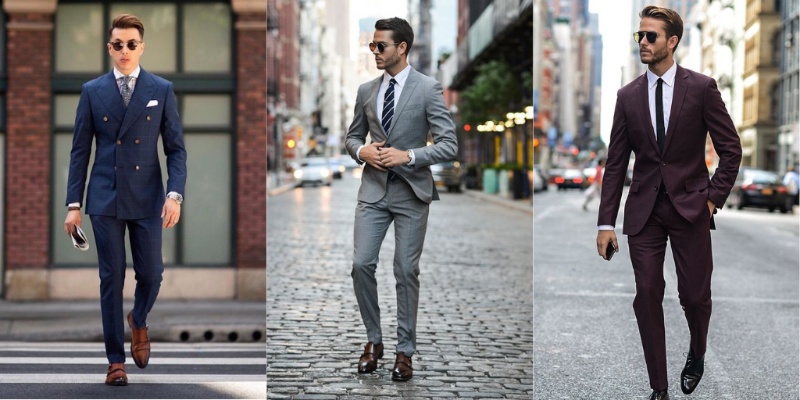
2. Key elements of a formal suit
The jacket
As the centerpiece, a proper formal suit jacket is structured to provide shape and authority to the wearer’s frame. You’ll often see notch lapels in business-appropriate suits, or peak lapels for more elevated, ceremonial occasions. These lapels are clean, angular and timeless; never mean to be flashy, but always make you feel refined.
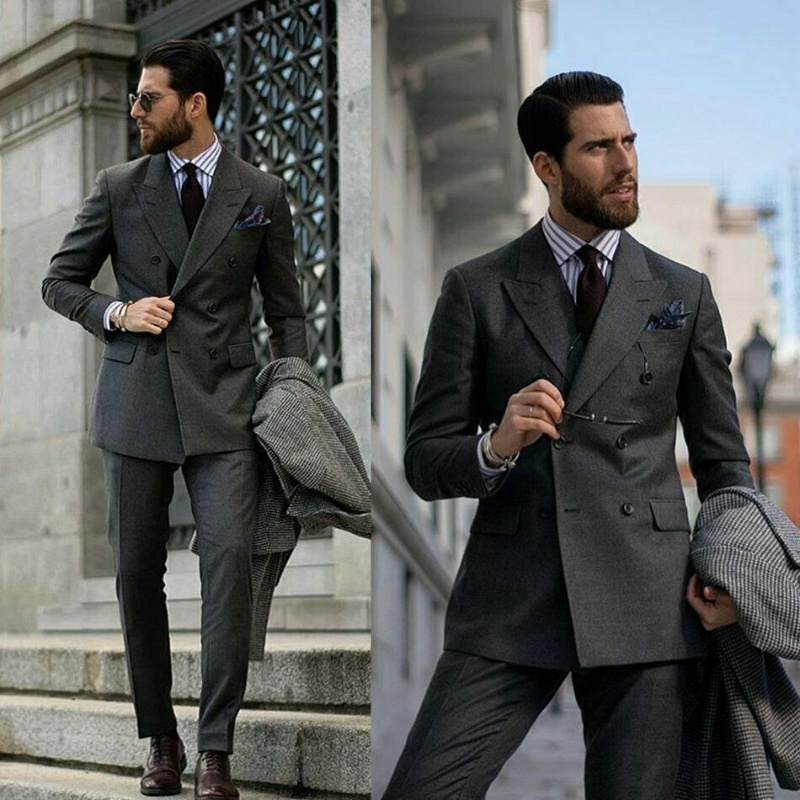
The trousers
Made from the same cloth as the jacket to ensure harmony, formal suit trousers feature a clean crease down the front, offering a sense of sharpness and symmetry. A well-pressed crease shows attention to detail and respect for the formality of the moment.
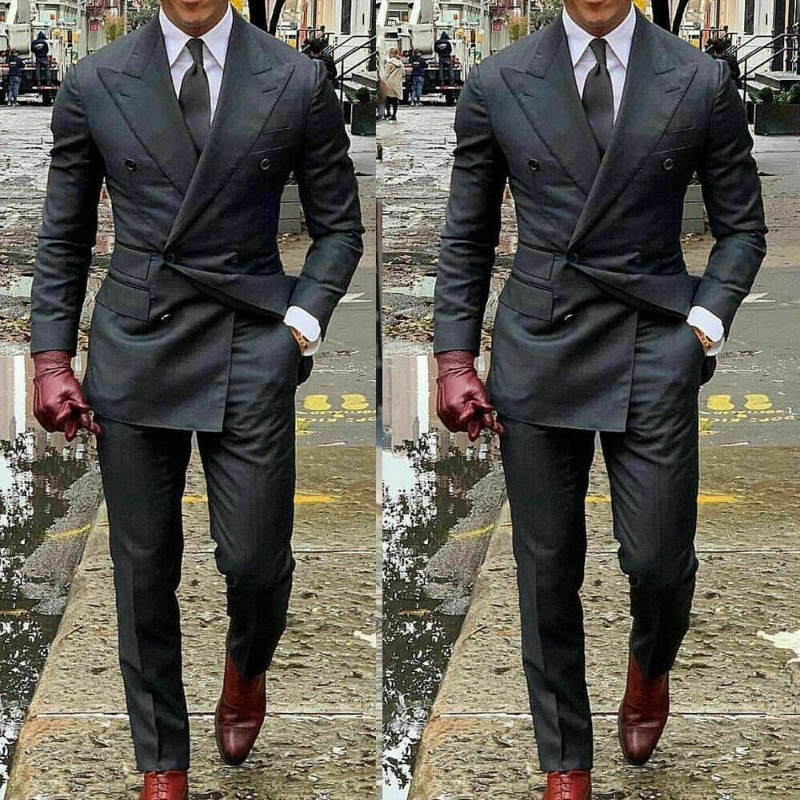
Fabric choice
Formal suits are traditionally cut from high-quality wools like worsted wool, tropical wool or blends with mohair for a subtle sheen and durability. These materials drape well, hold their structure and age beautifully when properly cared for.
Color choice
We stay within a narrow yet powerful range. Navy, charcoal and black color are the foundation of formal tailoring. These tones project confidence without shouting, and they offer versatility across various formal occasions.
Beside that, a formal suit is never mean to be worn alone. It is completed with a dress shirt, typically in white or a pale blue. Paired with a tie or bow tie and finished with polished leather dress shoes. Each component supports the overall elegance of the look.
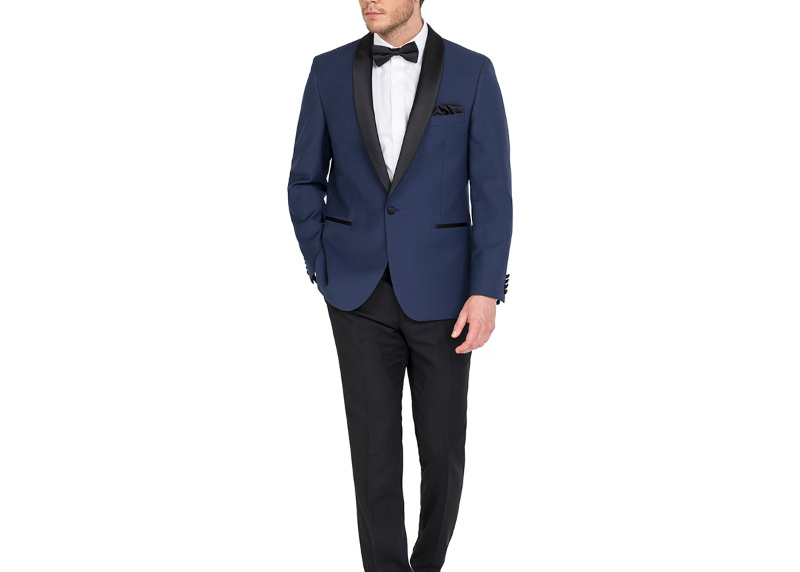
3. When and where to wear a formal suit
Business meetings or job interviews
These maybe are the prime examples for anyone want to wear a formal suit. In professional settings where first impressions matter, a well-fitted formal suit communicates respect, competence, and seriousness. It shows that you take both yourself and the opportunity seriously, whether you’re walking into a boardroom or sitting across from a potential employer.
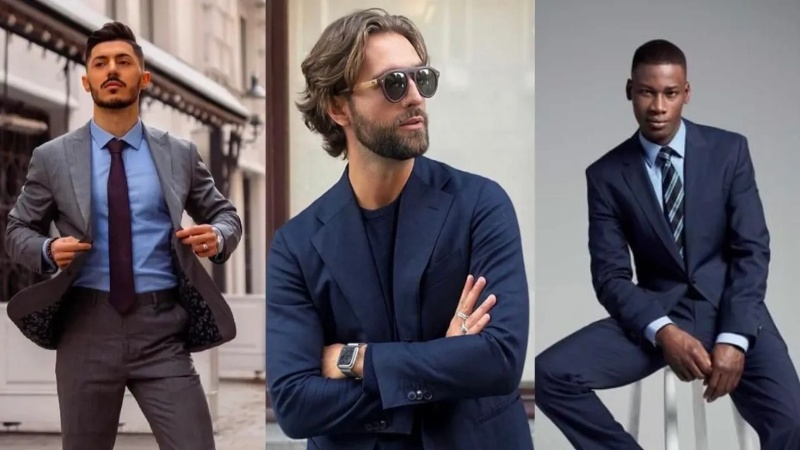
Weddings and formal ceremonies
They are also classic settings for formal suit. Whether you’re the groom, a groomsman, or a guest, wearing a formal suit shows honor for the event and those involved. Depending on the dress code, the style may range from a sharp two-piece suit to a full three-piece ensemble, but the principle remains the same: you dress to show respect.
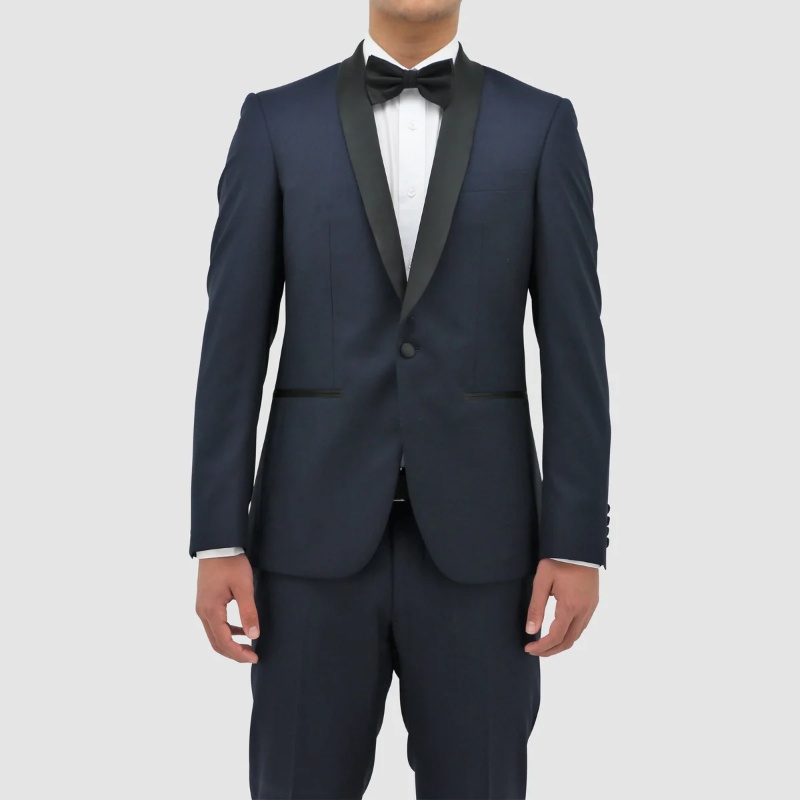
Funerals and religious events
These settings require a more subdued approach. A formal black or dark charcoal suit, paired with a simple white shirt and black tie, expresses solemnity and reverence that is much needed for a funeral suit or any religious events. In moments of remembrance or spiritual reflection, your attire should reflect dignity without drawing attention to itself.
Black-tie optional events
This is a category that often causes confusion. While these events couldn’t require you to put on a tuxedo, they do call for your most formal suit. A dark, well-tailored suit with a crisp white shirt and elegant accessories is entirely appropriate. Think charity galas, upscale dinners or evening receptions. When in doubt, it’s always better to be slightly overdressed than underprepared.
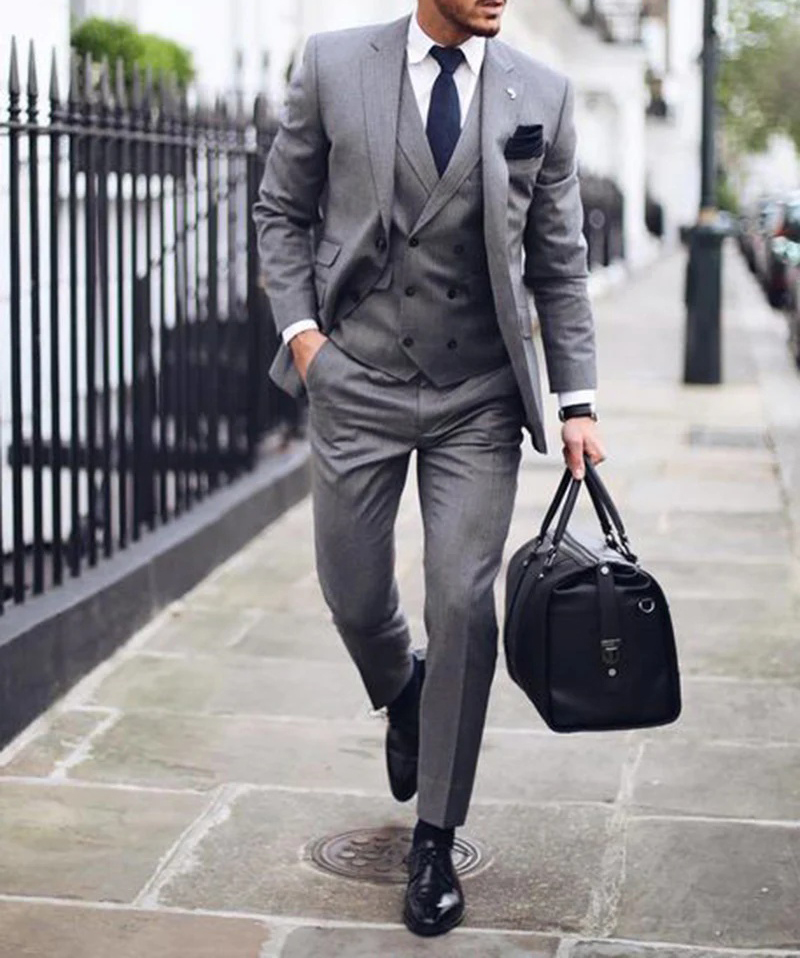
4. Choosing the right formal suit
Fit is everything
When it comes to a formal suit, the fit is the most crucial element. A suit may look amazing on the rack, but if it doesn’t fit you properly, it won’t have the desired impact. Fit is everything. There are three main types to consider: slim fit, regular fit, and tailored fit.
A slim fit suit is ideal for those with a leaner frame. It hugs the body closer, creating a sharp, modern silhouette. However, it’s essential to ensure it’s not too tight, your movement should still be comfortable.
A regular fit suit, on the other hand, provides a bit more room and is more classic in style, offering a balanced, traditional look that flatters almost every body type. A tailored fit sits between the slim and regular fit, offering a slightly more structured and refined shape while still allowing comfort and movement.
The right fit should enhance your natural shape, providing clean lines without feeling restrictive. A tailored suit is truly transformative, not just in appearance, but in how you carry yourself. The goal is to find you a suit that feels like it was made just for you.
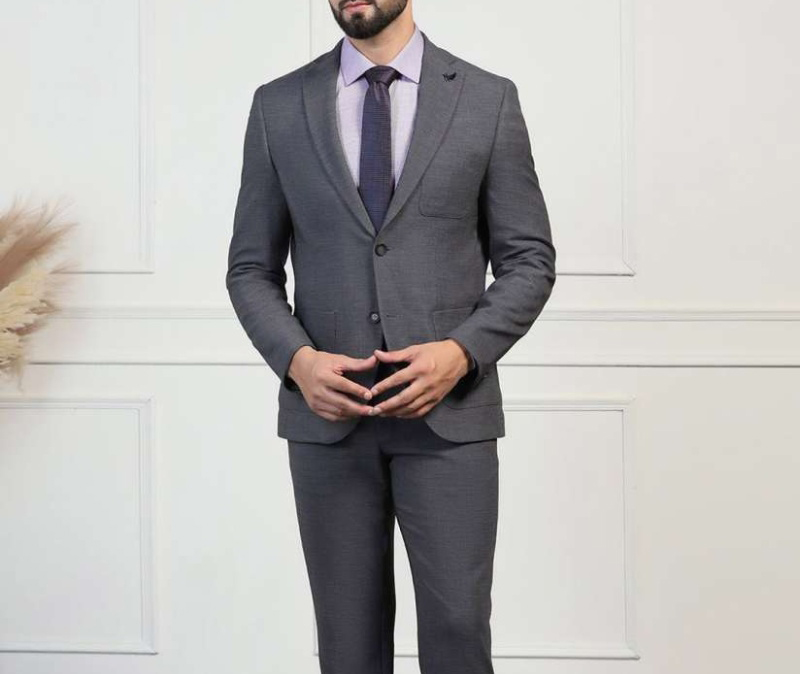
Fabric and color choice
The fabric and color of your formal suit are just as important as the fit. Choosing the right fabric can make all the difference in terms of comfort, durability, and overall appearance.
For most formal suits, wool is the go-to fabric because of its breathability, flex and can be worn year-round. During warmer months, consider tropical wool or a wool-linen blend to keep you cool without sacrificing style. In cooler seasons, heavier fabrics like flannel or tweed add warmth and texture.
As for color, classic shades like navy, charcoal and black are timeless and versatile. These colors work well for a variety of occasions, from business meetings to evening events. For those who want something a bit more adventurous, dark green, deep burgundy or even midnight blue can offer a sophisticated twist on traditional formalwear.
Remember, a darker suit is always more formal, while lighter tones can be perfect for daytime events.
When selecting your fabric and color, consider the season, your body shape and the theme of the event itself. A well-chosen fabric will elevate the overall appearance of your suit, while the right color can complement your complexion and the occasion.
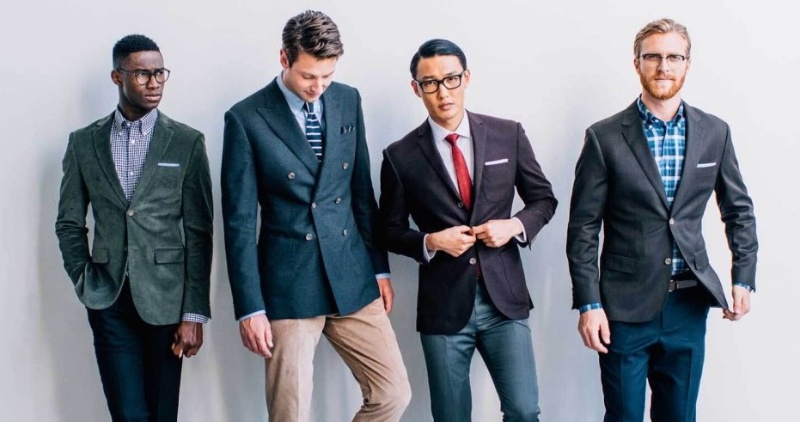
The finishing touches
The difference between a good suit and a great one often lies in the details. This is where the finishing touches come into play—items like pocket squares, cufflinks, and shoes that elevate your overall look. While these may seem like small accessories, they play a big role in perfecting your appearance.
A pocket square adds an elegant pop of color and personality to your jacket, while cufflinks can make a subtle but striking statement. When it comes to shoes, always opt for classic leather dress shoes in black, brown, or oxblood, depending on your suit’s color. The shoes should be polished to perfection—nothing says a lack of attention to detail like scuffed shoes.
Additionally, don’t forget about the tie. A formal tie should be made of quality silk, with a texture that complements the suit fabric. When properly tied, a well-chosen tie can bring the entire look together, making you stand out for all the right reasons.

5. The importance of dressing appropriately
In tailoring, we often say: “Clothing speaks before you do”. And in the world of formalwear, that couldn’t be more true. Dressing appropriately isn’t about vanity or following trends—it’s about understanding context, showing respect, and carrying yourself with quiet dignity.
When you wear a formal suit to the right occasion, you’re not just meeting a dress code. You’re honoring the people you’re with, the event you’re attending, and the meaning behind it all. A well-chosen suit tells others that you care—about the moment, the impression you leave, and the way you present yourself.
Consider this: arriving underdressed to a formal setting can unintentionally signal a lack of seriousness or even disregard for others. On the other hand, when you dress with intention, you immediately set a tone of professionalism, confidence, and self-respect. Whether it’s a job interview, a wedding, or a solemn farewell, the right attire helps you stand tall—and helps others see you in your best light.

A formal suit is more than just tailored fabric. Whether in a boardroom, at a wedding or during a formal event, it communicates confidence without needing to say a word. Formal suit a symbol of elegance, purpose and respect for the occasion. Understanding what a formal suit is and how to wear it well is the first step toward mastering timeless style in your looks.
Image cre: Internet
Create from my passion about sartorial that I accidently discover when I was searching to upgrade my style, this website is dedicated to providing in-depth knowledge, expert styling tips and the latest trends in men’s tailored fashion. Though sometimes I might sound a little cheesy cuz of all that philosophy book I’ve read 🙂
